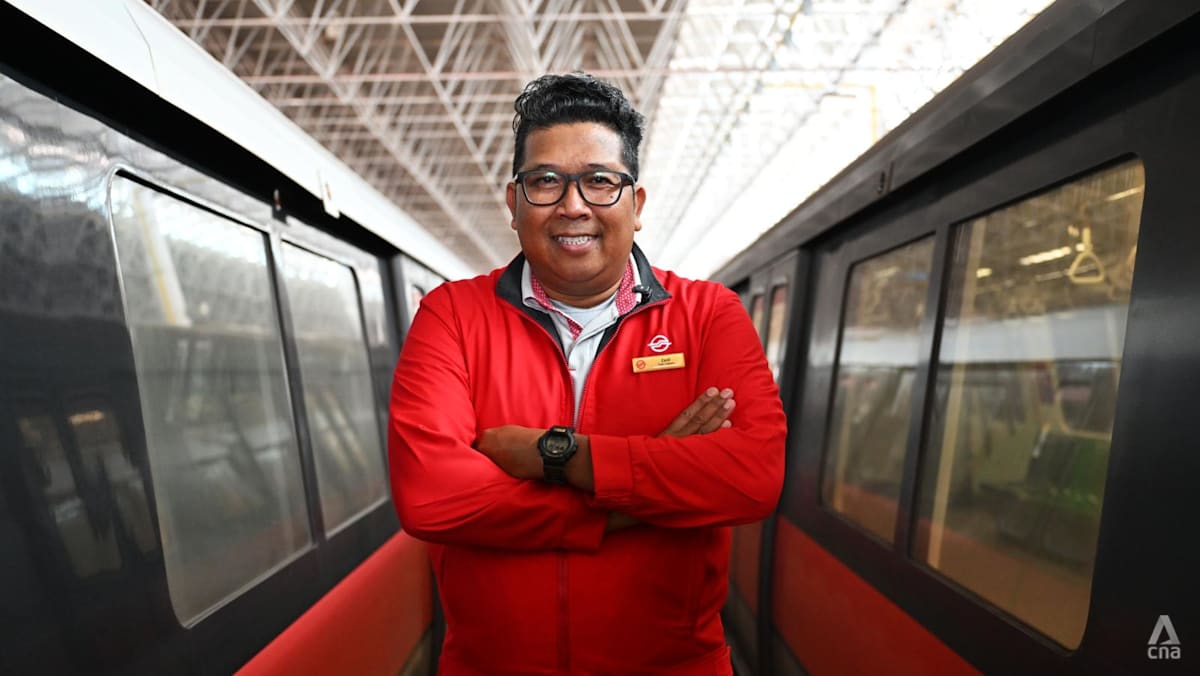A TRAIN CAPTAIN’S JOURNEY
For some commuters, the first-generation trains are a source of nostalgia, with social media users recalling childhood rides and calling for a proper send-off.
Speaking to the media after one of his final shifts on these trains, Mr Zaidi reflected on the differences that only a seasoned train captain might notice.
They were the “smoothest” to operate, he said. “As a train captain, we can feel that different fleets of trains have different types of brakes.”
He recalled how, in the earlier years, train drivers sometimes had to apply brakes manually during rainy weather for better control. This was a test of skill and precision, which Mr Zaidi said was a source of pride.
“The older train captains, we are basically champions of driving manually,” he said. “During our time, we challenged each other to see who had the best braking, who had the smoothest braking.”
That hands-on era ended with a major signalling system upgrade that was completed in 2018, which introduced more automation to the fleet and did away with the need for manual braking.
“As the system upgrades, the automatic features come in. We have, in fact, lesser touch(points) on the train system, unless it is required,” Mr Zaidi said.
Still, some differences remain between the first-generation trains and newer models. Brake tests, for example, must still be done manually on the old trains, unlike newer ones which have an automated brake testing function.
When they first launched, the C151 trains had narrower orange seats – a design etched in the memories of many commuters. Between 2004 and 2009, they underwent mid-life upgrades to increase capacity, introduce wider seats and add wheelchair spaces.
